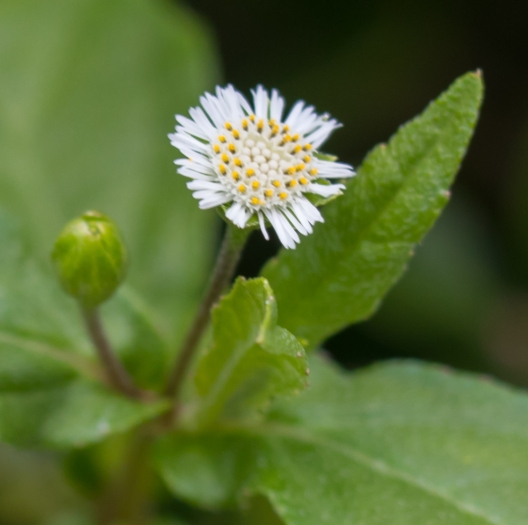False Daisy
(Eclipta prostrata)
False Daisy (Eclipta prostrata)
/
/

© portioid
CC BY-SA 4.0











Estimated Native Range
Summary
False daisy is valued for its medicinal properties, particularly in traditional Ayurvedic medicine, where it is used to treat a variety of ailments. It is also used as a vegetable in some cultures and can be cultivated as a ground cover in wet areas of the garden. In terms of cultivation, Eclipta prostrata prefers consistently moist soil and can tolerate a range of light conditions from full sun to part shade. However, gardeners should be cautious as it can become invasive outside its native range, spreading rapidly and outcompeting native vegetation.CC BY-SA 4.0
Plant Description
- Plant Type: Herb
- Height: 0.3-1.6 feet
- Width: 1-3 feet
- Growth Rate: Moderate, Rapid
- Flower Color: N/A
- Flowering Season: Spring, Summer, Fall
- Leaf Retention: Deciduous
Growth Requirements
- Sun: Full Sun, Part Shade
- Water: Medium, High
- Drainage: Fast, Medium, Slow
Common Uses
Bee Garden, Edible*Disclaimer: Easyscape's listed plant edibility is for informational use. Always verify the safety and proper identification of any plant before consumption., Low Maintenance, Potted Plant
Natural Habitat
Tropical and subtropical wet, marshy areas such as riverbanks and pond edges
Other Names
Common Names: Eclipta, Bombiji, Bosaka, Ebenda-Benda, Etat La Malumba, Yerba de Tago, Hanryeoncho, Li Chang
Scientific Names: , Eclipta prostrata, Anthemis abyssinica subsp. abyssinica, Anthemis abyssinica var. abyssinica, Anthemis bornmuelleri subsp. brachyota, Anthemis cotula subsp. hierosolymitana, Anthemis galilaea subsp. hierosolymitana, Anthemis viridis, Artemisia viridis, Chamaemelum foetidum
GBIF Accepted Name: